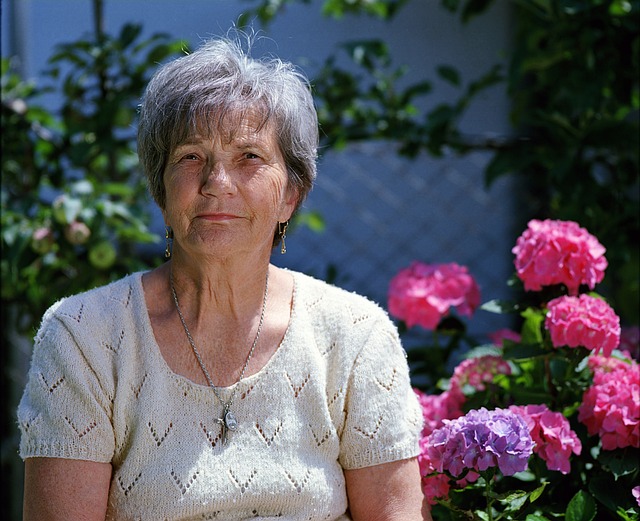Category: Elderly Companion Services
Elderly Companion Services: Enhancing Quality of Life for an Aging Population
Introduction
In the rapidly aging global population, elderly companion services have emerged as a vital support system, ensuring the well-being and independence of senior citizens. This comprehensive article aims to explore the multifaceted world of elderly companion services, delving into its definition, historical evolution, global reach, economic impact, technological integrations, regulatory framework, challenges, and future prospects. By examining these aspects, we will gain valuable insights into how these services contribute to improving the lives of the elderly and the broader societal implications.
Understanding Elderly Companion Services: A Comprehensive Overview
Definition:
Elderly companion services refer to a range of personalized care and support options designed to assist older adults in their daily lives, promote independence, and enhance overall well-being. These services can include companionship, assistance with personal care, meal preparation, household tasks, transportation, and social engagement activities. The primary goal is to enable seniors to remain in their homes or preferred environments for as long as possible while ensuring their safety, comfort, and dignity.
Core Components:
- Companionship: Providing emotional support, conversation, and companionship to combat loneliness and isolation.
- Personal Care Assistance: Help with activities of daily living (ADLs) such as bathing, dressing, grooming, and mobility support.
- Meal Preparation: Ensuring nutritious meals are provided, catering to dietary preferences and medical needs.
- Household Management: Light housework, laundry, grocery shopping, and other domestic tasks.
- Transportation: Assisting with travel to medical appointments, social events, or community activities.
- Social Engagement: Encouraging participation in group activities, hobbies, and outings for cognitive stimulation and social interaction.
Historical Context:
The concept of elderly companion services has evolved over the past few decades, driven by societal changes and an increasing awareness of the unique needs of older adults. Initially, these services were largely informal, with family members or neighbors providing support. However, as the elderly population grew and families became more dispersed, there was a growing demand for professional and specialized care.
In the 1980s, the idea gained prominence, with various organizations and government bodies starting to recognize the importance of home-based care for the elderly. This period saw the establishment of many companion service agencies, offering structured and regulated services to ensure quality and safety. Over time, these services have become more diverse, incorporating technology and innovative solutions to cater to the changing needs of an aging population.
Global Impact and Trends
International Influence:
Elderly companion services are a global phenomenon, with variations and adaptations across different countries. The universal need for support as populations age has led to the development of diverse models, each shaped by cultural, social, and economic factors. For example:
- In Japan, where the elderly population is among the highest globally, companion services often include traditional elements like tea ceremonies and gardening activities.
- North American models tend to emphasize personalized care, with a focus on building strong client-caregiver relationships.
- European countries have embraced technology, incorporating digital solutions for remote monitoring and communication.
Key Global Trends:
- Growing Demand: The global elderly population is projected to reach 2.1 billion by 2050, creating an increased demand for companion services worldwide.
- Technology Integration: The adoption of technology, such as mobile applications, wearables, and remote monitoring systems, is transforming the delivery of these services.
- Personalized Care: There is a growing emphasis on tailored care plans that consider individual preferences, cultural backgrounds, and specific health needs.
- Community-Based Models: Many countries are promoting community integration and participation for older adults, leading to more social engagement within companion service programs.
- Diverse Service Providers: The sector is seeing the rise of both traditional home care agencies and new market entrants, including tech startups and non-profit organizations.
Economic Considerations
Market Dynamics:
The elderly companion services market has experienced significant growth over the past decade, driven by demographic changes and increased awareness of eldercare options. According to a report by Grand View Research, the global home healthcare market (which includes companion services) is expected to reach $631.4 billion by 2027, growing at a CAGR of 13.9% from 2020 to 2027.
Investment Patterns:
Private equity and venture capital firms have shown interest in the sector, investing in innovative care models and technology startups. This influx of capital has contributed to the development of more sophisticated services and the adoption of new technologies.
Economic Impact:
- Job Creation: The industry supports a substantial workforce, providing employment opportunities for caregivers, assistants, and support staff.
- Cost-Effectiveness: Companion services are often considered more cost-effective than institutional care, allowing individuals to remain in their homes, reducing the financial burden on families and healthcare systems.
- Economic Growth: The sector contributes to the overall economy through direct and indirect spending, including salaries, supplies, and technology infrastructure.
Technological Integrations: Revolutionizing Elderly Care
Mobile Applications:
- Apps like CareZone and Elderly Companion offer remote monitoring, medication reminders, and secure communication between clients and caregivers.
- These applications allow families to track their loved ones’ activities, ensuring safety and peace of mind.
Wearable Devices:
- Smartwatches and fitness trackers can monitor vital signs and detect falls, providing early alerts to caregivers or emergency services.
- Examples include the Apple Watch with its Fall Detection feature and Fitbit’s care management tools.
Remote Monitoring Systems:
- Technology companies have developed comprehensive remote monitoring solutions that use sensors and cameras to track clients’ activities in their homes.
- These systems can detect unusual behavior, medication non-adherence, or emergency situations, enabling prompt interventions.
Virtual Reality (VR) and Telehealth:
- VR is being used for cognitive stimulation and social engagement, providing virtual reality experiences that mimic real-world interactions.
- Telehealth services allow healthcare professionals to consult with elderly clients remotely, offering convenient access to medical advice and therapy.
Regulatory Framework: Ensuring Safety and Quality
Legal Considerations:
The regulation of elderly companion services varies significantly across countries. Some nations have comprehensive legal frameworks in place, while others rely on industry standards and voluntary guidelines. Key areas of regulation include:
- Licensing and registration of care providers.
- Minimum training requirements for caregivers.
- Safety protocols and emergency response procedures.
- Data privacy and protection for client information.
Quality Assurance:
- Many countries have established quality assessment programs to monitor service providers, ensuring they meet specific standards.
- These assessments cover aspects like staff-to-client ratios, care planning, and client satisfaction.
- Some regions also mandate regular inspections and audits of companion service agencies.
Challenges in the Elderly Companion Services Sector
Workforce Shortages:
One of the primary challenges is the growing demand for services outpacing the availability of trained caregivers. This shortage is attributed to low pay, demanding work conditions, and a lack of awareness about career opportunities in eldercare.
Retaining Caregivers:
High turnover rates among caregivers pose a significant challenge, as it disrupts care continuity and increases costs for service providers.
Cultural and Language Barriers:
In multicultural societies, providing culturally sensitive care can be difficult, especially when language differences exist between caregivers and clients.
Technology Adoption:
While technology offers numerous benefits, the digital divide poses a challenge, as not all elderly individuals or their families are comfortable with or have access to these tools.
Funding and Accessibility:
The cost of companion services can be a barrier for low-income families, limiting access to these essential care options.
Future Prospects: Shaping the Next Era of Elderly Care
Emerging Technologies:
- Artificial Intelligence (AI): AI has the potential to revolutionize companion services through personalized care planning, predictive analytics for health risks, and automated task management.
- Robotics: Robotic companions can provide social interaction, assistance with mobility, and medication reminders, complementing human caregivers.
- Genomics and Personalized Medicine: Advancements in genomics may enable more tailored care approaches based on individual genetic profiles.
Personalized and Centered Care:
The future of elderly companion services is likely to focus on highly personalized care models that consider each client’s unique needs, preferences, and cultural backgrounds.
Community-Based Models:
Integrating companion services into community settings and promoting aging in place will continue to be a priority, enhancing social engagement and quality of life for older adults.
Collaboration between Sectors:
Cross-sector partnerships between healthcare providers, technology companies, and social service organizations can drive innovation and improve the overall care experience.
Global Collaboration:
Sharing best practices and research findings internationally will foster the development of high-quality companion services, ensuring that older adults worldwide receive the support they need to live fulfilling lives.
In conclusion, elderly companion services play a vital role in supporting the growing elderly population, enhancing their independence, and improving overall well-being. As technology advances and societal attitudes evolve, these services will continue to adapt and grow, shaping a future where older adults can age with dignity and purpose in familiar surroundings.
Elderly Companion Services: Nurturing Independence at Home

Elderly Companion Services are crucial for understanding and meeting the unique needs of seniors at…….
Elderly Companion Services: Relieving Family Caregiving Burden

Families facing caregiving challenges experience high stress and fatigue, but Elderly Companion Serv…….
Elderly Companion Services: Benefits, Choosing, and Supportive Caregiving

Elderly Companion Services provide tailored support for seniors staying in their homes, offering ass…….
Efficiently Manage Caregiving: The Role of Elderly Companion Services

Caregivers of elderly relatives face challenges like time management and burnout while juggling mult…….
Compassionate Alzheimer’s Care: The Role of Elderly Companion Services
Elderly Companion Services: Navigating Support for Dementia Care
Fostering Social Links: Elderly Companion Services for Isolated Seniors

With an aging population leading to more older adults living alone, social isolation becomes a signi…….
Elderly Companion Services: Revolutionizing In-Home Health Monitoring

Elderly Companion Services are vital for seniors wanting to age comfortably at home, preserving inde…….
Enhancing Mobility: Elderly Companion Services for Seniors

Elderly Companion Services are crucial in improving the quality of life for older adults, offering p…….










